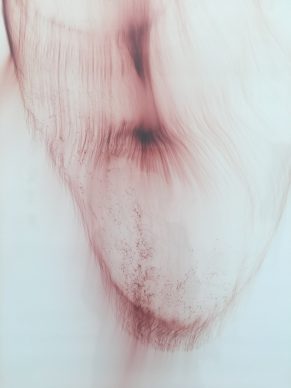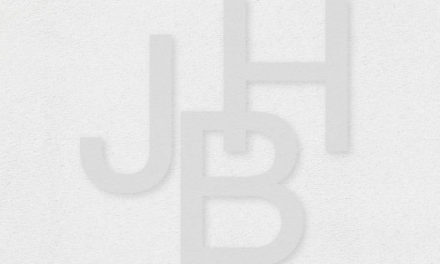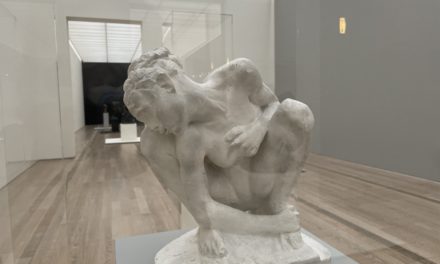It’s true of German-born, London-based artist Wolfgang Tillmans (b. 1968).
Slowly but surely he’s become one of the superstars of contemporary art, and deservedly so.
He currently has an exhibition at Tate Modern in London, he’s inaugurated last Saturday another exhibition at the Fondation Beyeler in Basel where the quality is as high as the quantity (200 works), as well as appearing at the Venice Biennale in the international pavilion and having a room of his own in Paris at the Grand Palais for Laurent Le Bon’s big Garden ( Jardins, le jardin oeuvre d’art totale) exhibition.
According to Tillmans, the Tate Modern exhibition addresses the state of the modern world since the Iraq War, 14 years ago.
The one in Basel comprises mainly of a private survey that begins with a self-portrait drawn in 1986 and goes right up to his most recent photos.
‘Wolfgang’s production perfectly incarnates the images of our time. Critics are unanimous about his importance to the 21st century,’ states Samuel Keller, head of the Fondation Beyeler, which is designating its entire space to a photographer for the first time in its history.
Tillmans first made his mark by populating his not especially meticulous photographs of rebellious youth—his own.
But he rapidly proved himself by enlarging his style and his repertoire.
The result, 30 years of exploration, is visible from London to Basel.
You might be inclined to qualify his work as contemplative, as it contains a lot of emptiness, silence, and what’s generally termed the trivial.
He even brings to mind the effect produced by those dream stones that ancient Chinese scholars were so fond of, as well as Japanese cinema, and certain images by the great Indian director Satyajit Ray in a 21st-century version.
This was his response to the possible Asian influence.
Tillmans plays with chance encounters, lighting and locations, but he also intercedes mechanically in the dark room during the printing process. He says, ‘I must be the only photographer working today who doesn’t know how to use Photoshop.’
His style consists in blending abstraction and figuration, small and large formats, framed photos and photos sellotaped or pinned to the wall.
His is a rich and a poor photography.
It deals with large and small subjects: a windscreen wiper in action under the rain and a market in Africa resembling an Orientalist painting, a skin texture on an intimate part of the body and a young man urinating on a chair.
A folded piece of paper, rumpled bed sheets… He experiments with matter, light, size and framing—or lack of it.
Tillmans surprises, he disturbs, he touches. It’s no doubt why the market for his work has long been sluggish.
His aim is not to produce work that provides reassurances.
He says, ‘Everything is hidden in an image. There is always something to discover.’
At the Fondation Beyeler the floating hanging which means you pass from one private scene to the next as if channel hopping, forces the viewer to make an effort to look: the goat that has two shadows and the Concorde plane in the sky that in the end resembles a common clothes moth.
We let ourselves alight on planet Tillmans with a joyous serenity.
Lastly, even if the theme is not explicitly present at the Fondation Beyeler exhibition, Wolfgang Tillmans has been highly politicised for some time. He explains:
“In my daily experience, I don’t consider portraits separately from still lifes. Now I look at you and I see a portrait.; now I look over there and I see a landscape. If I look over here, I see a still life. So it is the experience of daily life: how all art comes out of the ordinary of daily life and how everything has a potential to be extraordinary”
Wolfgang Tillmans Tokyo, 2014. Wolfgang Tillmans, Fondation Beyeler 2017.
Until 11 June. www.tate.org.uk
Until 1 October. www.fondationbeyeler.ch
Until 24 july. www.grandpalais.fr.
Support independent news on art.
Your contribution : Make a monthly commitment to support JB Reports or a one off contribution as and when you feel like it. Choose the option that suits you best.
Need to cancel a recurring donation? Please go here.
The donation is considered to be a subscription for a fee set by the donor and for a duration also set by the donor.




















